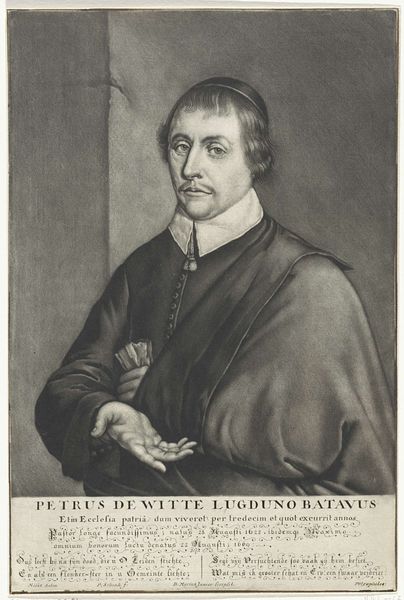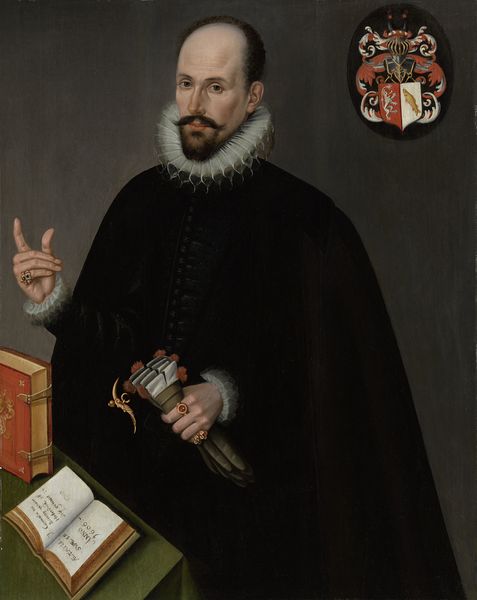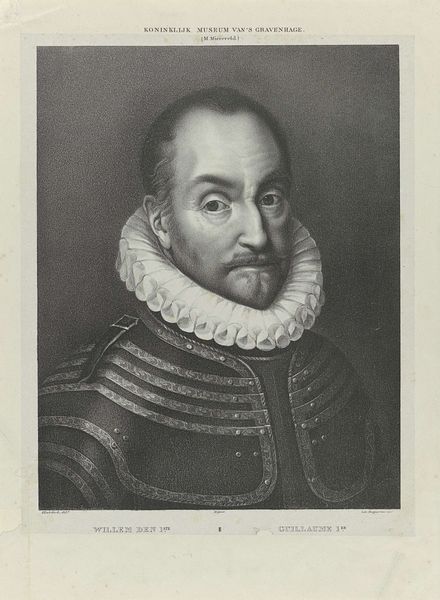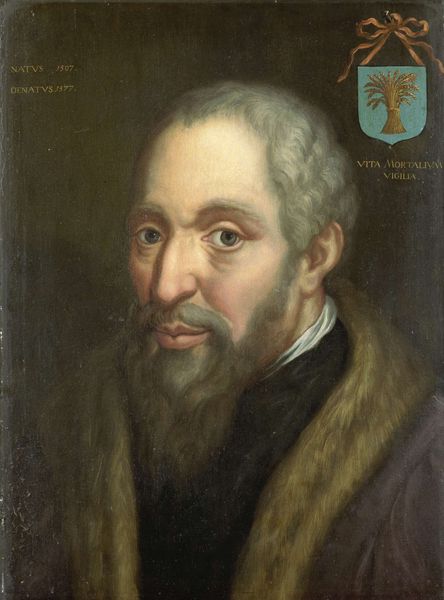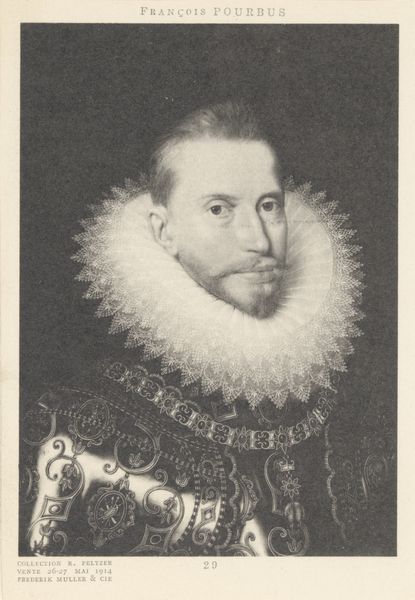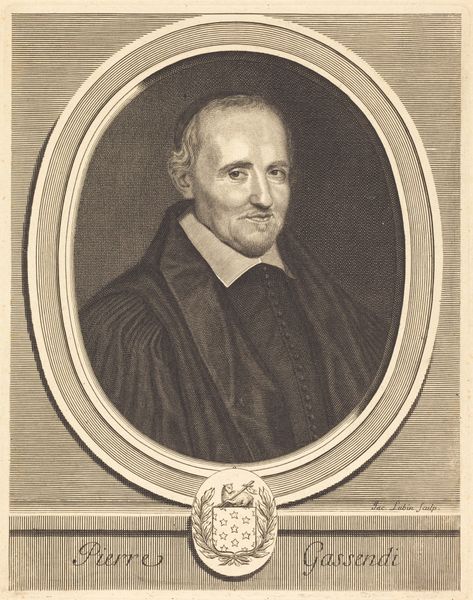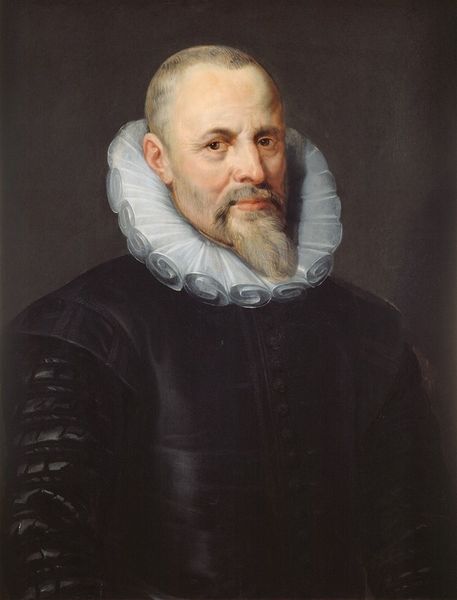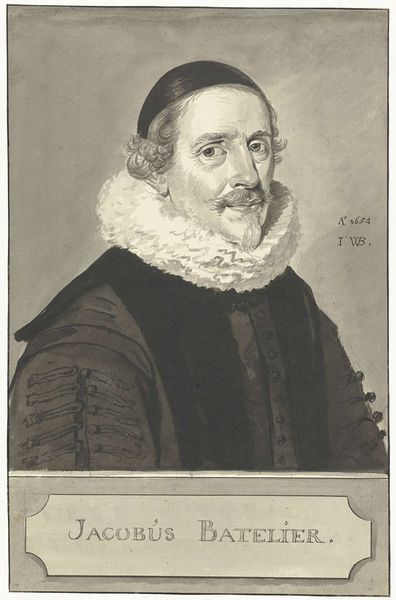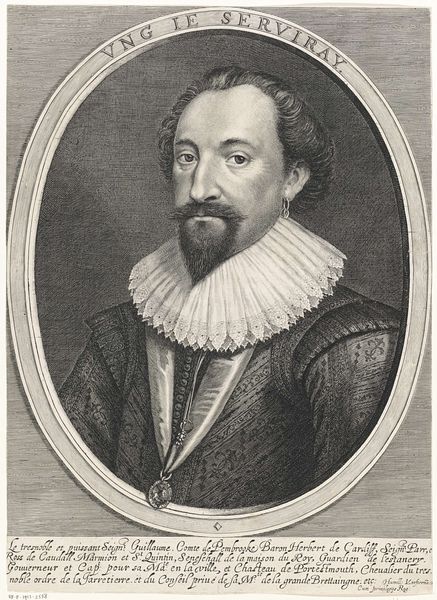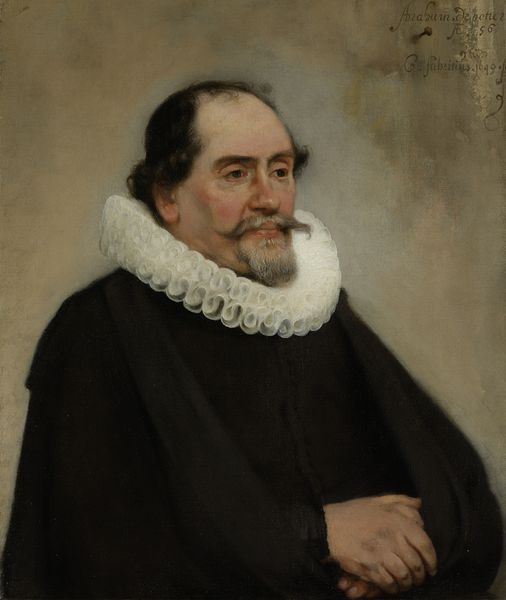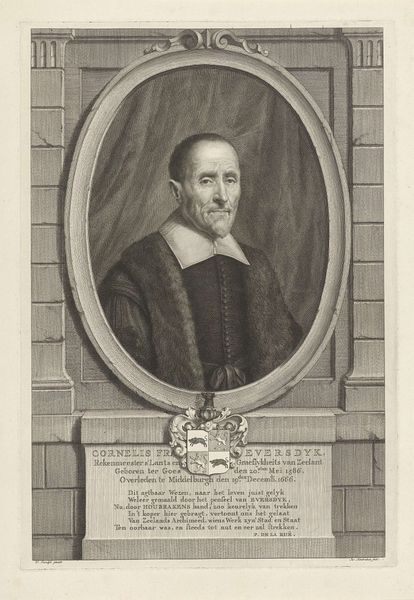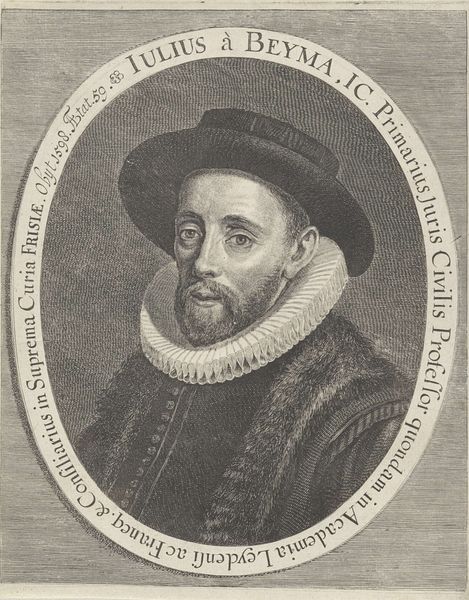
#
figurative
#
portrait image
#
portrait
#
portrait reference
#
portrait head and shoulder
#
portrait drawing
#
facial portrait
#
portrait art
#
fine art portrait
#
celebrity portrait
#
digital portrait
Copyright: Public Domain: Artvee
Curator: Look at the sitter's eyes, that ever-so-slightly melancholic gaze, isn't it just captivating? Editor: Indeed, there's a definite gravitas. I'm particularly struck by the man's formal attire against the muted background – it signifies the painting's historical context of class and privilege, wouldn’t you agree? We're looking at Peter Paul Rubens' "Portrait of Petrus Pantinus," created in 1633. Curator: It's rather curious. This isn't Rubens at his most flamboyant, is it? More contained, less bombastic. And those subtle reds and whites! Very pared back compared to some of his larger works, but somehow intensely focused on capturing his essence. What about the book in his hands? Editor: Yes, the "Vita S. Theclæ" or "Life of St. Thecla" – the writings, alongside the family crest in the upper-left corner, are crucial indicators of Pantinus' identity. It adds layers to the sitter; he wasn't just anyone. This inclusion highlights the power of the church and theological debate during the time. Curator: See how the velvet seems almost tactile? Rubens manages to paint the intellectual, even the spiritual, life but also doesn’t shy away from celebrating pure, sumptuous fabric. It reminds us of the material realities underpinning everything. Editor: Absolutely. Considering the colonial implications of wealth during the 17th century, what might it mean for a man to present himself with these material symbols? And given the religious element, how might this image reinforce existing hierarchies? Curator: He seems to have understood something profoundly about the human condition... Perhaps this quieter, more internal reflection is just as powerful as the dramatic canvases for which he is better known. It's lovely. Editor: It is thought-provoking. Looking beyond individual aesthetic enjoyment, this artwork also prompts conversations about power, religion, and representation that continue to resonate today. It encourages dialogue.
Comments
No comments
Be the first to comment and join the conversation on the ultimate creative platform.
